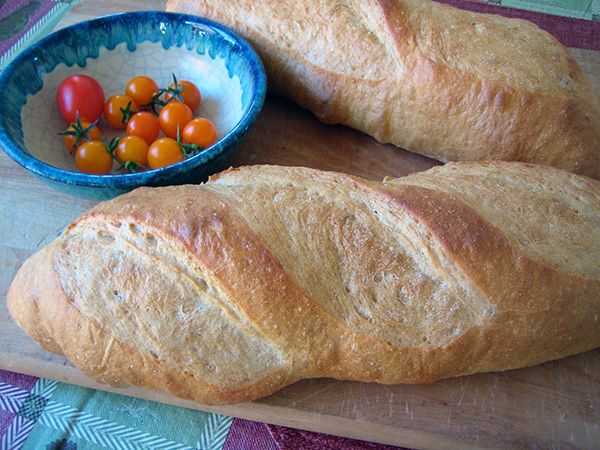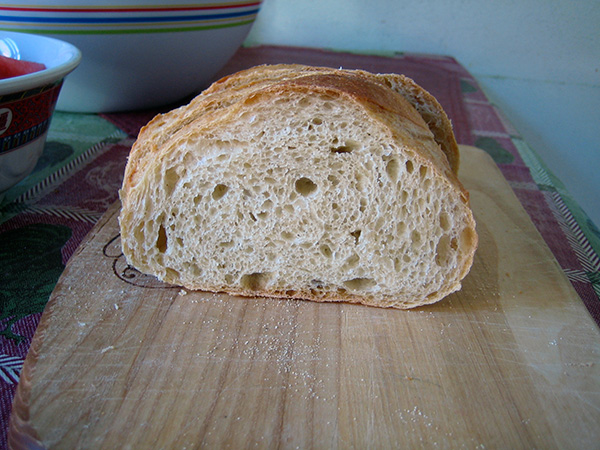Pain au Levain SOUR TEST WITH DURUM


This is my first loaf of Pain au Levain from Jeff Hamelman's "Bread" using the starter I created using the durum flour procedure to improve sour a couple weeks ago. The starter was a bit slow upon coming out of a 2 week sleep and refreshed. It did wake and get active so here we are.
- Log in or register to post comments
- 5 comments
- View post
- ehanner's Blog


 [/center] I mixed the focaccia dough at around noon. It was around 25C in the kitchen. The dough hadn't even budged by 5:00pm. Still no sign of any rising by 6:00. So I decided to cut the dough into 8 pieces and try making pitas. As I rolled out the discs, I wracked my brains trying to think what was different.
[/center] I mixed the focaccia dough at around noon. It was around 25C in the kitchen. The dough hadn't even budged by 5:00pm. Still no sign of any rising by 6:00. So I decided to cut the dough into 8 pieces and try making pitas. As I rolled out the discs, I wracked my brains trying to think what was different. 








